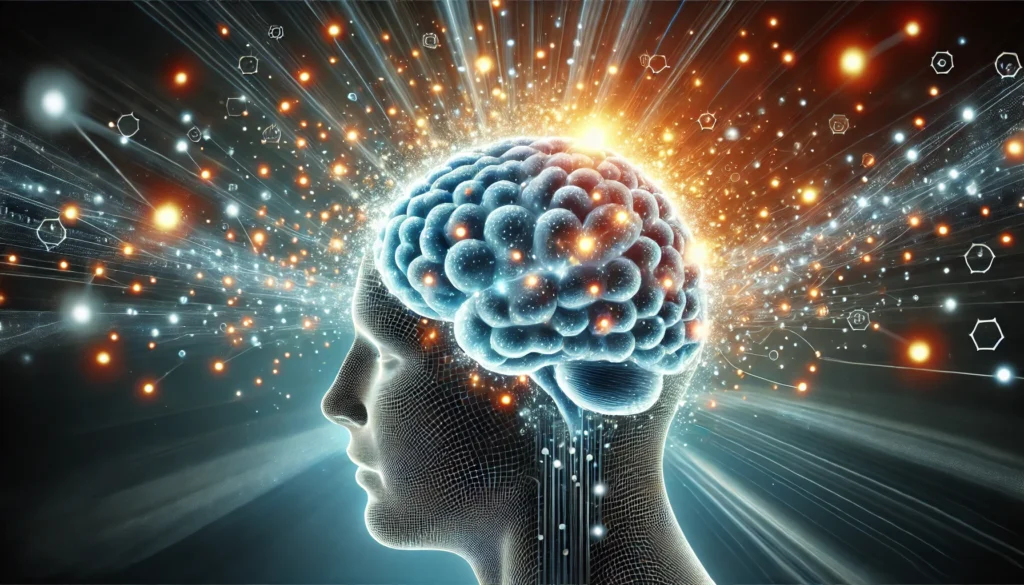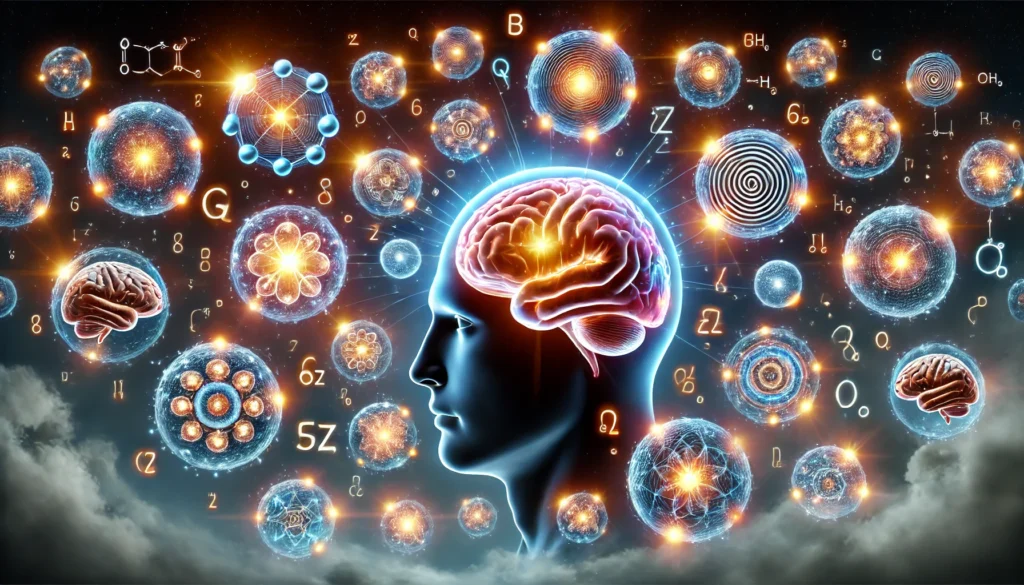In our fast-paced world, the ability to learn quickly and effectively is increasingly valuable. Whether you’re preparing for an exam, giving a presentation, or simply looking to enhance your mental agility, mastering memorization techniques can be a game-changer. This article delves into effective strategies for rapid memorization and provides insights on how to apply these methods for optimal results.
You may also like: Effective Memory Techniques for Better Studying
The Science Behind Memorization
Understanding how our brain processes and stores information is crucial to improving our memorization skills. The human brain encodes, stores, and retrieves information through complex neural pathways. Strengthening these pathways enhances our ability to remember and recall information swiftly. Here, we explore several scientifically-backed techniques to boost your memorization prowess.
Neural Pathways and Memory
The brain is a network of billions of neurons interconnected by synapses. When you learn something new, your brain forms new connections between neurons. Repeated exposure to the information strengthens these synaptic connections, making it easier to recall the information later. This process is known as synaptic plasticity and is fundamental to memory formation.
The Role of Neurotransmitters
Neurotransmitters such as dopamine, serotonin, and acetylcholine play critical roles in memory and learning. Dopamine enhances attention and motivation, serotonin influences mood and memory encoding, while acetylcholine is vital for forming new memories. Understanding these chemicals can help you leverage your brain chemistry to improve memorization.
Memory Types: Short-term vs. Long-term
Memory is often categorized into short-term and long-term types. Short-term memory allows you to retain information for a brief period, whereas long-term memory involves storing information for extended durations. Converting short-term memories into long-term ones involves a process called consolidation, which can be optimized through various techniques.
Chunking: Breaking It Down
Chunking is a powerful method that involves breaking down information into manageable pieces or “chunks.” This technique leverages the brain’s natural ability to remember patterns, making it easier to recall complex information.
How to Implement Chunking
- Identify the Information: Begin by determining what needs to be memorized. This could be a list, a speech, or a series of steps. Clearly outline the scope of the information to create a structured approach.
- Break It Down: Divide the information into smaller, related groups. For example, if memorizing a phone number, chunk it into sections (e.g., 123-456-7890). This process simplifies the learning task by reducing cognitive load.
- Practice Retrieval: Practice recalling each chunk independently before attempting to recall the entire sequence. Regular practice strengthens neural pathways associated with each chunk, facilitating easier retrieval later.
- Apply to Everyday Tasks: Use chunking in daily activities such as grocery shopping, learning a new language, or studying for exams. This helps reinforce the technique and makes it a natural part of your learning process.
- Visualization for Chunking: Enhance chunking by visualizing the chunks in a story or diagram. This can help create mental connections and make the chunks more memorable.
The Method of Loci: Visual Memory Palace
The Method of Loci, or the memory palace technique, is an ancient strategy that uses visualization to enhance memory retention. By associating information with specific locations, you can create a mental map that aids recall.
Creating Your Memory Palace
- Choose Your Palace: Select a familiar place, such as your home or a favorite route, as the setting for your memory palace. Familiarity with the location helps you easily navigate and place memories.
- Place Information: Visualize placing each piece of information in a specific location within your palace. Use vivid imagery to make each association distinct and memorable.
- Walk Through: Mentally walk through your palace, retrieving the information from each location. This active retrieval helps reinforce memory and ensures information is accessible when needed.
- Use Multiple Palaces: For extensive information, create multiple palaces or use different parts of the same location. This prevents overcrowding and confusion, ensuring clear recall.
- Engage Your Senses: Incorporate sensory details like smells, sounds, and textures into your palace to strengthen associations and make memories more vivid.

Mnemonics: Harnessing the Power of Association
Mnemonics are memory aids that use associations to make information more memorable. They can be acronyms, rhymes, or visual images that help encode information in a way that’s easier to recall.
Crafting Effective Mnemonics
- Create a Simple Representation: Transform the information into an acronym or rhyme. For instance, “PEMDAS” (Parentheses, Exponents, Multiplication and Division, Addition and Subtraction) for the order of operations in math. Simplicity aids recall.
- Visualize the Association: Create vivid mental images that link the mnemonic with the information it represents. Strong imagery can make abstract concepts more tangible and memorable.
- Practice Regularly: Reinforce the mnemonic by reviewing it frequently. Regular practice helps embed the mnemonic in long-term memory, ensuring it remains accessible.
- Use Rhymes and Songs: Incorporate rhymes or tunes into your mnemonics for an added layer of recall. Music and rhythm can enhance memory retention by engaging different brain areas.
- Personalize Your Mnemonics: Tailor mnemonics to your interests and experiences. Personal connections make mnemonics more relatable and easier to remember.
Spaced Repetition: Timing is Everything
Spaced repetition is a technique that involves reviewing information at increasing intervals. This approach capitalizes on the psychological spacing effect, which suggests that information is better retained when revisited over time.
Implementing Spaced Repetition
- Schedule Reviews: Plan reviews at intervals that grow progressively longer. Start with daily reviews, then extend to weekly, and finally monthly. This strategic timing helps reinforce information at optimal intervals.
- Use Technology: Leverage apps like Anki or Quizlet, which are designed to facilitate spaced repetition. These tools automate the scheduling process, making it easier to manage your learning.
- Monitor Progress: Adjust intervals based on your comfort with the material and retention rate. Regularly assess your progress to ensure the technique remains effective and adapts to your needs.
- Combine with Other Techniques: Integrate spaced repetition with other memorization methods like active recall or mnemonics to enhance retention. This multifaceted approach can maximize learning efficiency.
- Consistency is Key: Maintain a regular review schedule to ensure information stays fresh in your mind. Consistent practice is crucial for long-term retention and mastery.
Active Recall: Testing Your Memory
Active recall is a practice that involves testing yourself on the material you wish to remember. This technique strengthens memory by forcing the brain to retrieve information, thereby reinforcing neural connections.

Steps to Active Recall
- Self-Quiz: After studying, close your notes and try to recall as much information as possible. This active retrieval process strengthens memory and highlights areas needing improvement.
- Flashcards: Use flashcards to test your recall of key concepts and definitions. The concise format of flashcards makes them an effective tool for quick review and self-assessment.
- Practice Exams: Take practice tests to simulate real-world retrieval scenarios. This not only enhances memory but also builds confidence for actual assessments.
- Peer Quizzing: Engage in group study sessions where peers quiz each other. This collaborative approach provides diverse perspectives and reinforces learning.
- Teach Others: Explaining concepts to others is a powerful form of active recall. Teaching solidifies your understanding and exposes any gaps in knowledge.
Sleep and Nutrition: Essential Foundations
While techniques are invaluable, they must be supported by a foundation of good health. Quality sleep and proper nutrition are critical to optimizing cognitive function and memory.
Ensuring Cognitive Support
- Prioritize Sleep: Aim for 7-9 hours of quality sleep per night to facilitate memory consolidation. Sleep cycles play a crucial role in processing and storing new information.
- Eat Brain-Boosting Foods: Incorporate foods rich in omega-3 fatty acids, antioxidants, and vitamins that support brain health. A balanced diet nourishes the brain and enhances cognitive function.
- Stay Hydrated: Ensure adequate water intake to maintain peak cognitive function. Dehydration can impair concentration and memory, so keep hydration levels optimal.
- Exercise Regularly: Physical activity enhances blood flow to the brain, supporting memory and learning. Regular exercise is associated with improved cognitive performance.
- Manage Stress: Practice stress-reduction techniques like meditation or yoga to maintain mental clarity. Chronic stress can negatively impact memory, so managing it is essential.

Conclusion: Personalized Memorization
The journey to mastering memorization techniques is personal and varies from individual to individual. Experiment with different strategies to discover which methods resonate most with you. By integrating these techniques into your routine, you can enhance your learning efficiency and achieve your cognitive goals faster.
In a world that demands quick learning and adaptability, these memorization techniques provide a structured approach to mastering new information. Whether you’re a health coach guiding clients, a science journalist crafting accessible narratives, or a biohacker optimizing mental performance, these strategies will empower you to learn more effectively and efficiently.
Remember, practice and consistency are key. Embrace these techniques, tailor them to fit your learning style, and watch as your ability to memorize and recall information transforms. With dedication, you can unlock the full potential of your memory and thrive in any learning environment.
Further Reading:
12 Best Memorization Techniques to Boost Your Memory
How to memorize things fast: 11 memorization techniques
Study tips: Top 5 memorization techniques
Important Note: The information contained in this article is for general informational purposes only, and should not be construed as health or medical advice, nor is it intended to diagnose, prevent, treat, or cure any disease or health condition. Before embarking on any diet, fitness regimen, or program of nutritional supplementation, it is advisable to consult your healthcare professional in order to determine its safety and probable efficacy in terms of your individual state of health.
Regarding Nutritional Supplements Or Other Non-Prescription Health Products: If any nutritional supplements or other non-prescription health products are mentioned in the foregoing article, any claims or statements made about them have not been evaluated by the U.S. Food and Drug Administration, and such nutritional supplements or other health products are not intended to diagnose, treat, cure, or prevent any disease.


